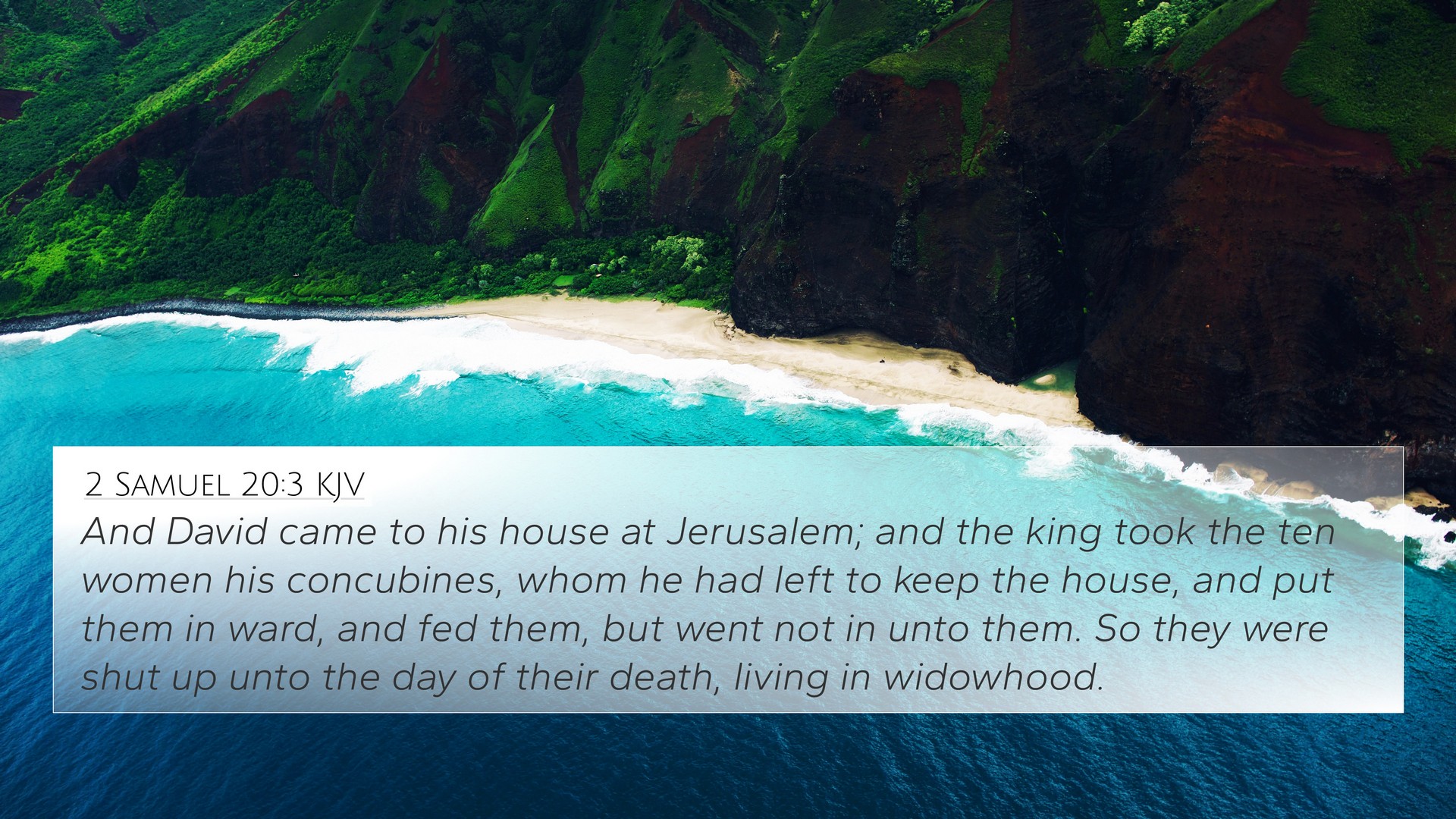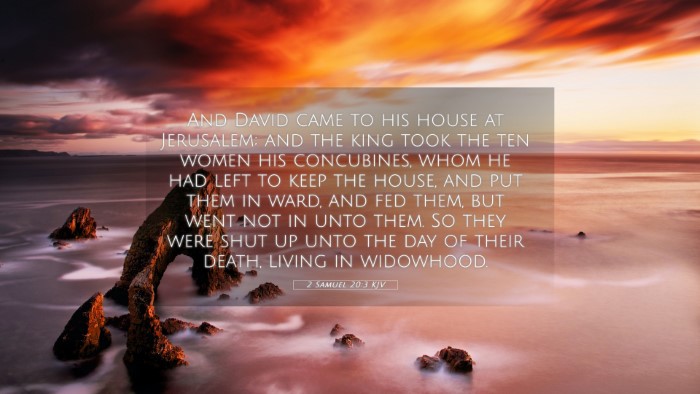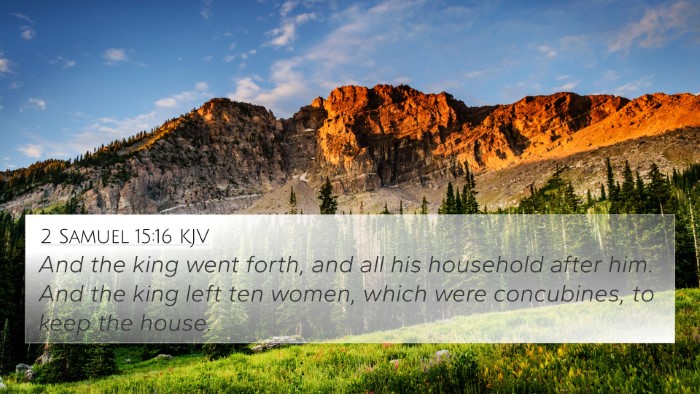Understanding 2 Samuel 20:3
Bible Verse: 2 Samuel 20:3
“And David came to his house at Jerusalem; and the king took the ten women his concubines, whom he had left to keep the house, and put them in ward, and fed them, but went not in unto them. So they were shut up unto the day of their death, living in widowhood.”
Summary of Meaning
This verse illustrates a significant moment in King David's life after the rebellion led by Absalom. Upon returning to Jerusalem, David takes the ten concubines he had left behind and places them in a protective confinement. This action carries deep implications, highlighting themes of vulnerability, the consequences of sin, and the complexities of David's kingship.
Commentary Insights
Matthew Henry’s Commentary
Henry emphasizes the deep sense of loss and isolation these women experience. Previously serving as David’s concubines, they are now treated with utmost care but thrown into a state of widowhood. This reflects the consequences of Absalom’s rebellion, not just for David but also for those connected to him.
Albert Barnes' Notes
Barnes notes the political implications of David's actions, indicating that this was a strategic measure to prevent any claims to the throne that the concubines might pose. He points out that by putting them in ward, David removes any opportunity for destruction of his own family through illicit relationships in a time of political upheaval.
Adam Clarke’s Commentary
Clarke provides a detailed view of the repercussions this act had on both David and the concubines. He suggests that this act was meant to show the seriousness of the sin committed during Absalom’s uprising and presents an interpretation of David’s conscience regarding his previous moral failures concerning Bathsheba.
Thematic Connections
This verse correlates with several biblical themes and references, illustrating a rich tapestry of intertextual connections.
- Consequences of Sin: 2 Samuel 12:10-12 discusses the repercussions of David’s sin with Bathsheba.
- Protection of Vulnerable: Proverbs 31:8-9 calls for the protection of those in need.
- Isolation: Jeremiah 14:3-4 speaks to the suffering of women in times of distress.
- Political Strategy: 1 Kings 1:2 illustrates similar themes of guarding alliances and legacy.
- Widowhood: Isaiah 54:4 highlights the hardships faced by widows, linking back to these concubines.
- Loyalty and Betrayal: Psalm 55:12-14 expresses the deep pain of betrayal within close relationships.
- Temporal Power: Ecclesiastes 3:1-8 denotes a time for different purposes, resonating with the timing of David’s actions.
Cross-Referencing and Thematic Analysis
The analysis of 2 Samuel 20:3 allows us to engage in scriptural cross-referencing to deepen our understanding of Biblical themes. Here, we see the importance of linking scripture to reveal the narrative and moral aspects of David’s life and leadership.
- Historical Context: Linking this event to David’s overall narrative in 2 Samuel provides insight into the challenges he faced as a leader.
- Comparative Analysis: Comparing this passage to 1 Samuel 8:11-22, where God warns Israel about the behavior of kings, opens discussions on accountability.
- Inter-Biblical Dialogue: Looking at references in the New Testament that discuss sin and redemption, such as Romans 6:23, can enhance understanding of the gravity of David's actions.
- Women in the Bible: Cross-referencing this with narratives of women in the Bible can shed light on their roles and experiences.
- David’s Repentance: Exploring Psalm 51 alongside this passage encapsulates David’s inner conflict and need for divine mercy.
Conclusion
In examining 2 Samuel 20:3 through the lens of various public domain commentaries, we grasp the depth of David's actions and how they resonate with broader themes of sin, vulnerability, and leadership. The connections between Bible verses, particularly through cross-referencing, enrich our understanding of this poignant moment in Scripture.
Tools for Bible Cross-Referencing
If you are interested in further exploring bible cross-reference guides or studying these themes in-depth, consider utilizing resources like Bible concordances, cross-reference tools, and comprehensive study materials that offer insights into cross-referencing methods.
Additional Insights
Understanding how to find cross-references in the Bible can dramatically enhance your personal study. Look for keywords in one passage and compare them with corresponding texts across the Bible, paying attention to both similarities and significant differences.
Ultimately, the study of 2 Samuel 20:3 opens a window into the complex dynamics of David's reign, the socio-political context of his decisions, and the spiritual lessons we can glean from his life.





